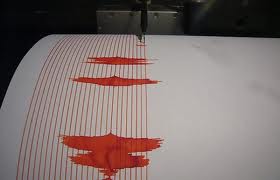The Scientific American magazine provides a summary of the recent report of the National Research Council on earthquakes associated with energy production:
Geologists and politicians have been arguing for several years about whether hydraulic fracturing of shale to release natural gas can cause earthquakes. Finally, a comprehensive study released today by the National Research Council has settled the question: yes, fracking can. The number of earthquakes linked to fracking operations is very small, however; many more temblors are linked to conventional oil and natural gas extraction.
Furthermore, the greatest risk of earthquakes due to fracking does not come from drilling into deep shale or cracking it with pressurized water and chemicals. Rather, it comes from pumping the wastewater from those operations back down into deep sandstone or other formations for permanent disposal, instead of storing it in tanks or open ponds at the surface. In January, wastewater injection was blamed for earthquakes that had just occurred in Youngstown, Ohio, on Christmas Eve and again on New Year’s Eve, measuring 2.7 and 4.0 on the Richter scale, respectively. Wastewater injection is also commonly used during conventional oil and gas production.
The National Research Council report, “Induced Seismicity Potential in Energy Technologies,” documents earthquakes associated with a full range of underground energy technologies. It does not determine any kind of “rate” at which they might occur, however. It associates a number of earthquakes with conventional oil and gas wells, more so when those wells are somewhat drained and are injected with water or gas to force out the remaining, hard-to-get fuel.
The report also links earthquakes to geothermal energy (tapping into hot underground reservoirs of steam or water) and so-called enhanced geothermal (forcing water into hot underground rock, to turn it to steam).
Two related technologies were investigated as well: wastewater injection, as noted, and carbon sequestration and storage. Only one sequestration project exists worldwide thus far, so data for the technique are meager.
Overall, technologies that basically balance the amount of fluid removed or injected, such as conventional oil wells, induced fewer seismic events than those that involve net injection or extraction. “The two techniques with the largest imbalance are carbon sequestration and wastewater injection,” said Murray Hitzman, professor of economic geology at the Colorado School of Mines and chairman of the committee that wrote the report, at a press briefing today. The two techniques increase subsurface pressure across large areas, so there is a greater chance of running across a fault, which could lead to an earthquake, Hitzman said.
The report notes that enhanced geothermal might also create an imbalance. In recent years several worrisome earthquakes have been linked to geothermal operations, including a magnitude 3.4 temblor in Basel, Switzerland, and smaller quakes close to an operation known as The Geysers in Santa Rosa, Calif.
Most troubling, the committee found, was that no set of industry “best practices” for minimizing the risk of earthquakes exists for any of the technologies, which in turn makes it difficult for regulators to establish sensible rules. The committee strongly recommends that energy companies work with the U.S. Department of Energy to establish such practices. It notes that best practices are important because all indications are that more and more underground extraction of energy will occur in the future.

